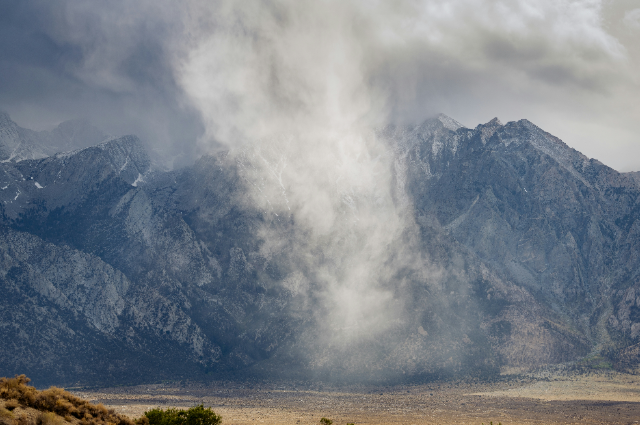
Photo by Abhi Verma on Unsplash / Representative Image
Central Government Steps In
Union Home Minister Amit Shah reached out to Himachal Pradesh Chief Minister Sukhvinder Singh Sukhu following a devastating cloudburst that has disrupted life in Shimla, Mandi, and Kullu districts. Shah assured Sukhu of central support, including the deployment of the National Disaster Response Force (NDRF) to help in relief efforts.
Chief Minister's Response
In the aftermath of the cloudburst, Chief Minister Sukhu convened a meeting with officials to discuss search and rescue operations. As of now, more than 50 people are missing and two bodies have been recovered. The Chief Minister highlighted that the incident occurred around 4:40 a.m. and warned of heavy rain expected over the next 36 hours. Teams from the District Collector's office, the State Disaster Response Force (SDRF) and the NDRF are already on site. Sukhu has also been in direct communication with the Union Home Minister to coordinate efforts.
Social Media Update
Chief Minister Sukhu took to the social media platform X to share this sad news. He reported that more than 50 people are missing in the areas of Rampur tehsil in Shimla, Padhar tehsil in Mandi district, and the villages of Jaon and Nirmand in Kullu. Teams from the NDRF, SDRF, Police, Home Guard, and Fire Services are actively involved in relief, search, and rescue operations. The local administration has been directed to ensure these operations proceed smoothly. Sukhu emphasized his ongoing communication with officials and his commitment to providing all necessary assistance from the state government.
The cloudburst in Himachal Pradesh has led to a serious situation with significant loss and disruption. The state's prompt response supported by the central government's assistance aims to address the immediate needs and bring relief to the affected areas.
What's exactly a Cloudburst?
Cloudbursts are intense and brief rainstorms that occur over a limited area. These weather events involve unexpected, heavy precipitation exceeding 100mm per hour typically impacting a region of about 20 to 30 square kilometers. In the Indian Subcontinent, cloudbursts often happen when monsoon clouds move north from the Bay of Bengal or the Arabian Sea. These clouds travel across the plains and reach the Himalayas, sometimes releasing up to 75 millimetres of rain per hour.
Several atmospheric conditions contribute to the formation of cloudbursts. When relative humidity and cloud cover are at their peak, combined with low temperatures and slow wind speeds, clouds can rapidly condense that will be resulting in a cloudburst. As temperatures rise, the atmosphere can hold more moisture which may come down as a short, intense rainfall. This heavy rain occurring within a span of 30 to 60 minutes can lead to flash floods in mountainous regions and urban flooding in cities.
While rain is simply condensed water falling from clouds, a cloudburst is characterized by its sudden and heavy nature. Any rainfall exceeding 100mm per hour is classified as a cloudburst. Although cloudbursts are natural phenomena, they are highly unpredictable, occurring abruptly and delivering a significant amount of rain in a short time. By understanding the conditions and impacts of cloudbursts, we can better understand these powerful and sudden weather events.
The Rising Waters and Aftermath in Mandi: Surge in Beas River Water Levels
In the wake of heavy rains, the water level in the Beas River has surged significantly. The Mandi police in a press release had reported a cloudburst occurring in Village Rajban near Terang, falling under the jurisdiction of the Tikkan Police Post in the Padhar sub-division. This sudden downpour resulted in the complete destruction of two houses and partial damage to another.
Emergency Measures and Safety Warnings
The district administration in Mandi highlighted that the heavy rains have caused a rise in the Beas River's water levels, leading to increased silt deposits. Consequently, the gates of the Pandoh Dam have been opened to release both water and silt. Authorities have cautioned residents to avoid approaching the riverbanks due to the dangerous conditions.
Political Reactions and Relief Efforts
Former Himachal Pradesh Chief Minister and State Leader of Opposition, Jairam Thakur, shared that he had spoken with the current Chief Minister and learned that over 50 people are missing and one person has tragically lost their life. While Thakur refrained from blaming the government outright, he emphasized that preparations to prevent such disasters were insufficient and given the damages from the previous year remained unrepaired. He noted that the state government is actively working on the situation with National Disaster Response Force (NDRF) teams deployed to assist. Thakur has also communicated with the party president and Health Minister JP Nadda to coordinate relief efforts. The recent heavy rains have led to severe flooding and destruction in Mandi, prompting emergency measures and political attention. The community is urged to stay safe and avoid the river areas as authorities manage the crisis.
Increased Frequency and Intensity of Cloudbursts
Climate change is a growing concern globally with numerous studies indicating that it will lead to more frequent and intense cloudbursts in many cities worldwide. This phenomenon is particularly alarming as it poses significant risks to urban areas and their populations.
Rising Global Temperatures
In May 2021, the World Meteorological Organization (WMO) highlighted a worrying trend: there is about a 40% chance that the annual average global temperature will temporarily reach 1.5°C above pre-industrial levels within the next five years. This projection emphasizes the urgent need for effective climate action to mitigate the adverse effects of global warming.
Record-Breaking Heat
The WMO further warned that there is a 90% probability that at least one year between 2021 and 2025 will become the warmest on record, potentially surpassing the heat levels recorded in 2016. This prediction is a stark reminder of the accelerating pace of climate change and its profound impact on our environment.
. . .
References:
